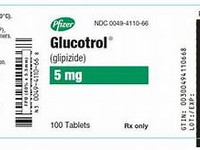Chlorpropamide
CLINICAL USE
Diabetes mellitus Diabetes insipidus
DOSE IN NORMAL RENAL FUNCTION
Diabetes mellitus: initially 250 mg daily (elderly 100–125 mg, but avoid). Maximum 500 mg dailyDiabetes insipidus: 100–350 mg daily
PHARMACOKINETICS
DOSE IN RENAL IMPAIRMENT
GFR (mL/MIN)
DOSE IN PATIENTS UNDERGOING RENAL REPLACEMENT THERAPIES
IMPORTANT DRUG INTERACTIONS
Potentially hazardous interactions with other drugsAnalgesics: effects enhanced by NSAIDs Antibacterials: effects enhanced by chloramphenicol, sulphonamides, and trimethoprim; effect reduced by rifamycinsAnticoagulants: effect possibly enhanced by coumarins; also possibly changes to INRAntifungals: concentration increased by fluconazole and miconazole and possibly voriconazoleSulfinpyrazone: enhanced effect of sulphonylureas
ADMINISTRATION
Reconstition
–
Route
Oral
Rate of Administration
–
Comments
Take with breakfast
OTHER INFORMATION
Chlorpropamide can enhance antidiuretic hormone and very rarely cause hyponatraemiaContraindicated in patients with serious impairment of hepatic, renal or thyroid function – severe risk of metabolic acidosis Prolonged hypoglycaemia can occur in azotaemic patients
